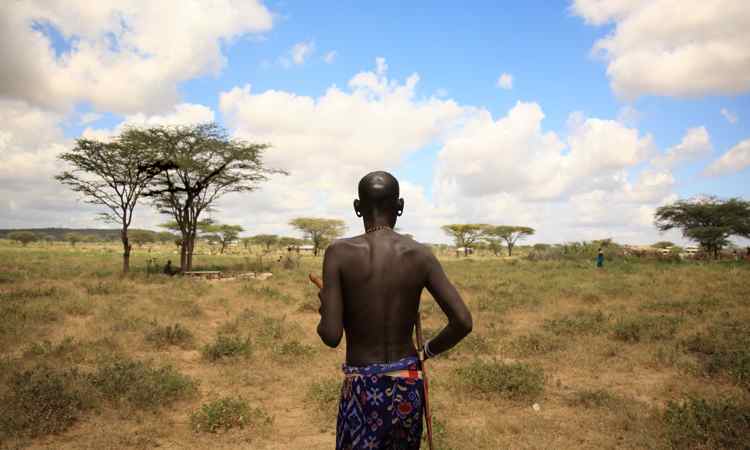The Samburu people of Northern Kenya are nomadic pastoralists; they move from place to place with their herds of cattle, camels, goats, and sheep. The relationship between the people, their livestock, and the environment has developed over hundreds of years, and has created a biocultural landscape that promotes both Samburu culture and biodiversity. In The Samburu Community Protocol, representatives of the Samburu Local Livestock Keepers wrote, “We are keepers of indigenous and exotic breeds of livestock and our lives are interlinked and wholly dependent on animals. Our way of life also allows us to live alongside wildlife, promoting the conservation of our breeds and other living resources in our environment.”
Unfortunately, the Samburu way of life is being threatened by the impacts of climate change. According to Kenya’s National Drought Management Authority, drought in Samburu County is leading to conflict, human and livestock displacement, livestock disease, and food insecurity. The Samburu Community Protocol is a reaction to these challenges, and is a call to prevent the loss of traditional knowledge, culture, and indigenous breeds.
According to the United Nations Environment Program (UNEP), the Samburu keep the indigenous breeds of small East African Zebu Cattle, Red Maasai sheep, and East African goats that are highly adapted to the local environment due to evolution and selective breeding. Because they are well adjusted to local conditions, indigenous breeds are more successful than exotic breeds in times of drought and disease, and therefore have a significant impact on the survival of the Samburu people and their culture. For example, during wedding ceremonies a man must find a pure Red Maasai sheep and present it to his mother in law. In the Protocol they write, “Without our indigenous breeds we will have lost a critical part of our collective bio-cultural heritage.”
However, there is controversy over whether or not people and wildlife can coexist. According to African Wildlife Foundation (AWF), hundreds of thousands of elephants and over 20,000 lions roam freely, posing a threat to pastoralists and their herds. Eighty percent of the elephants’ range in the African heartland is outside protected areas. The AWF ranks conflict between people and wildlife one of the major threats to conservation in Africa.
Nevertheless, Samburu have lived harmoniously with elephants for centuries. Research published by Renee Kuriyan at UC Berkeley found that strong knowledge of elephants exists among the Samburu people. Their behavior towards the elephants is influenced both by the costs and benefits the elephants bring, and the people’s cultural perceptions of them. Elephants create paths to water and break branches that can be used for firewood, two functions that benefit the Samburu’s survival. Additionally, a Samburu legend tells that elephants once lived in homes and worked with the women, demonstrating that the elephants are ancient relatives and therefore demand respect.
The Samburu Community Protocol asserts that the Samburu way of life, particularly pastoralism, contributes to the conservation of important environmental resources because of customary laws that guard against environmental degradation. They ask to have their livelihoods, their indigenous breeds, and their environment protected.











